Fertilizing Bamboo plants will not only make a remarkable difference in growth, but in some cases, the health of the plant must survive. Bamboo will flourish if planted in the amended soil with compost at a suitable place, and water is given regularly. Fertilizing with organic materials to encourage healthy, most attractive Bamboo will provide additional nutrients for vigorous growth. Chemical fertilizers are easier to apply, and the extra nutrients are leached in groundwater. Let’s check out the best fertilizer for Bamboo below.
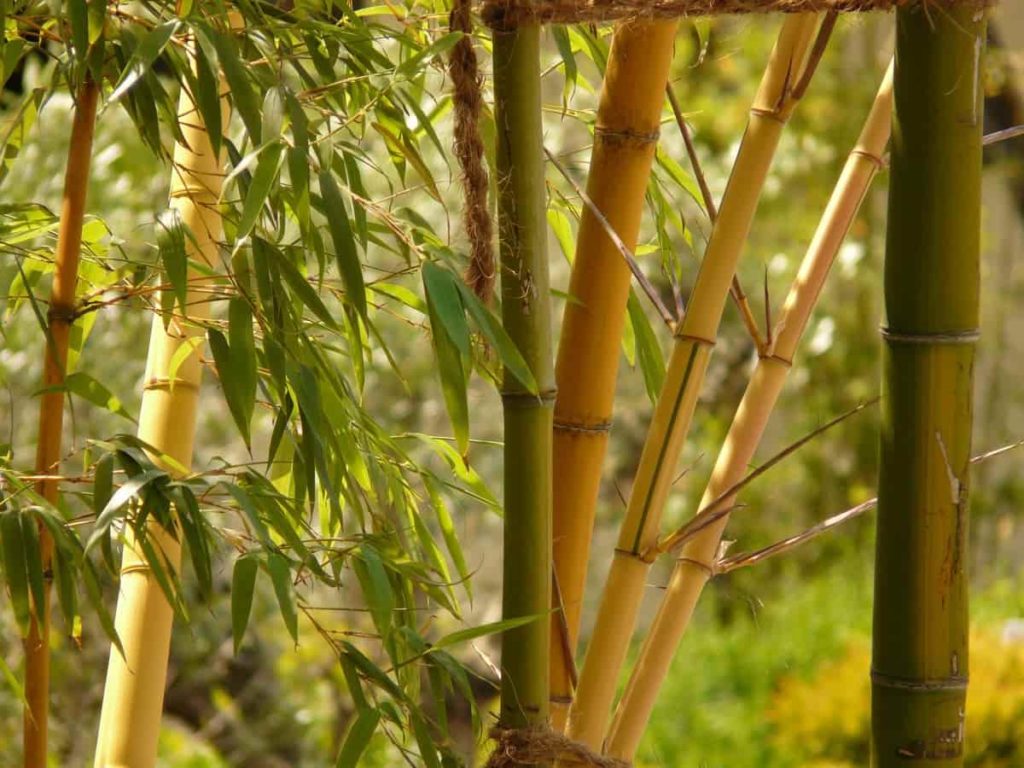
The best Bamboo fertilizer can be made up of organic materials, such as dissolving different matters of leaves or animals. However, you may also succeed using ready-made commercial fertilizer, which should either be too high or too low in nitrogen, depending on other times you use fertilizer throughout the year. If you use commercial fertilizer, you should purchase the fertilizer designed to apply around the plant base rather than directly at the plant leaves.
Like any other grass, Bamboo benefits from nitrogen applications, easy to offer as a homemade nutritional material. They are also a source of potassium. High amounts of nitrogen can cause aphid problems and push weak canes. Avoid weed-killing chemicals in fertilizers as they damage Bamboo plants. Without proper feeding, your Bamboo won’t look its best. There are some symptoms to find to indicate a nutritional deficiency.
The plant won’t grow just that much. The new shoots coming in spring and summer won’t be huge or numerous. If you’ve already had a Bamboo plant for two or three years, and it’s not blowing up with large culms and bushy leaves, it’s a good sign that it needs fertilizing. Other bad health symptoms include yellow leaves, brown tips on leaves, and leaf loss. Remember that most Bamboos drop their leaves in spring, as is new growth, not the way a leafy tree is in the fall.
If you’re fertilizing your Bamboo and it still shows these symptoms, something else is probably going wrong. For example, some varieties of Bamboo need more shade, and if they are getting too much direct sunshine, they won’t look their best. Another common problem is excessive watering. Bamboo does not perform well in saturated soil, so good drainage is essential.
In case you miss this: Bamboo Polyhouse Construction: Design, Subsidy, and Cost in India

Best fertilizer for Bamboo
Homemade fertilizers for Bamboo
Eggshells – The perfect nitrogen source is eggshells, and others are coffee grounds.
Coffee Grounds – Using spent coffee grounds directly in your Bamboo patch or pot will prevent its growth due to phytotoxic compounds in the grounds. Instead, compost the coffee grounds using a standard compost pile or vermiculture. Then add compost to your Bamboo.
Banana peels– Banana peels are the best source of potassium compared to wood ash and sheep manure.
Organic fertilizers for Bamboo
Bamboo will continue to grow in most soil types, but the better the soil, the higher the growth rate in most cases. Add some fertilizer and work it in the soil. Some gardeners recommend including bone meal, cottonseed food, and blood meal.
Compost manure for Bamboo
Compost – You must provide additional slow-release fertilizer twice a year, a 3-inch layer of compost or well-rotted manure around the base of Bamboo as a supply of natural nutrients.
Manure – Horse manure and mushroom compost are rich in nitrogen, which Bamboo needs. Chicken pop, with nitrogen and potassium more than any other fertilizer, is also best if you have any on your hand. Steer or chicken manure can be used very little as part of a soil mix, as long as another organic material is used.
In case you miss this: Bamboo Planting Ideas, Methods, Tips, and Techniques
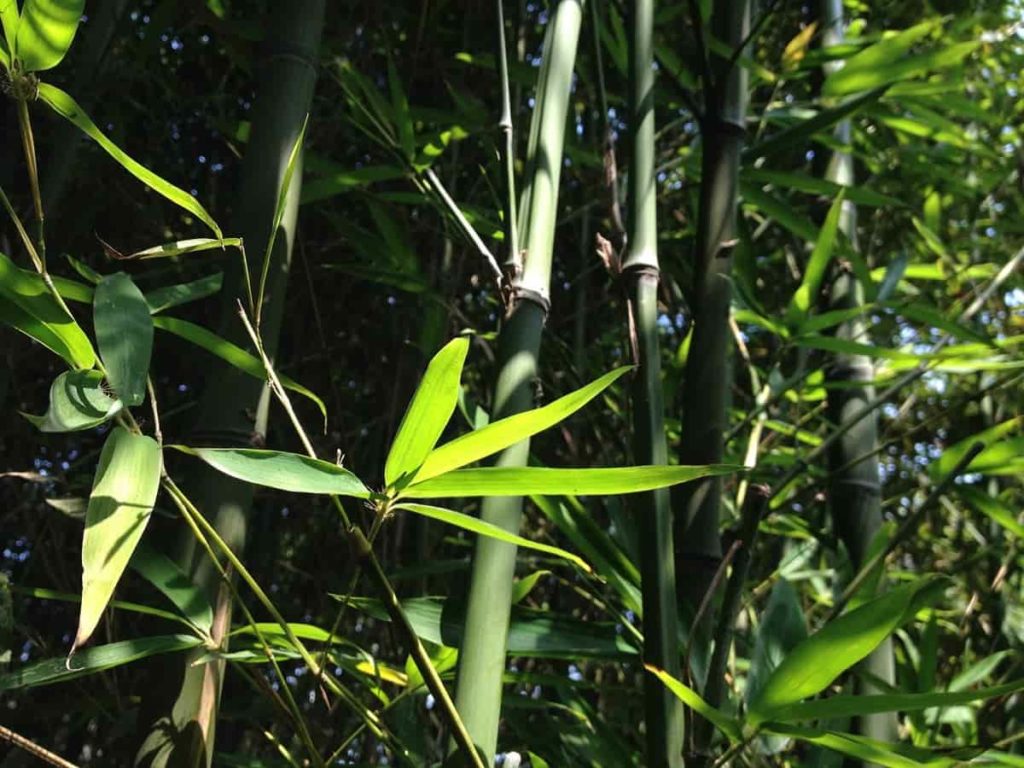
Natural fertilizers for Bamboo
Add 3 to 4 inches layers of organic mulch, such as compost, manure, bark chips, and the best fertilizer for Bamboo. It is going to help release nutrients slowly while maintaining soil moisture. Avoid mulching near a primary cane cluster, or it can attract fungal growth.
Liquid fertilizers for Bamboo
Nettle tea – Use 1 kg of nettles, including both leaves and stem, with 16 cups of water. There should be bruised nettle leaves, so you should bend or fold the leaves until you see a wet crease appearing at the leaf surface. Cut the leaves after they are bruised and fill a bucket of about three-quarters of the way with chopped leaves and water.
Stir the mixture every day for about two or three weeks until you see a strong smell coming from the tea. This fertilizer is concentrated, and you should be thin in the water you use to water your Bamboo. You can also use a non-dilute version in a spray bottle on Bamboo leaves. You can use nettle tea fertilizer for other household plants or garden plants.
Epsom salt – Dissolve two tablespoons of Epsom salt in hot water. Let it cool. Add it to your water can and water your plant well. In addition, you can also apply it as a foliar feed.
Compost tea – Compost tea keeps Bamboo looking lush, healthy, and beautiful.
Commercial fertilizers for Bamboo
NPK ratio
The best fertilizer for Bamboo during spring is something that is slowly released and rich in nitrogen. A composition similar to 21-5-6 is alright, as the plant needs plenty of nitrogen in spring when new growth appears. 226 grams per 80 to 100 square feet in a Bamboo canopy is the correct dose. Use a balanced fertilizer ratio of 10-10-10 in the summer, with a quantity of 1 pound for 80 to 100 square feet.
In case you miss this: Indoor Bamboo Plant Care – Tips, Ideas, Secrets
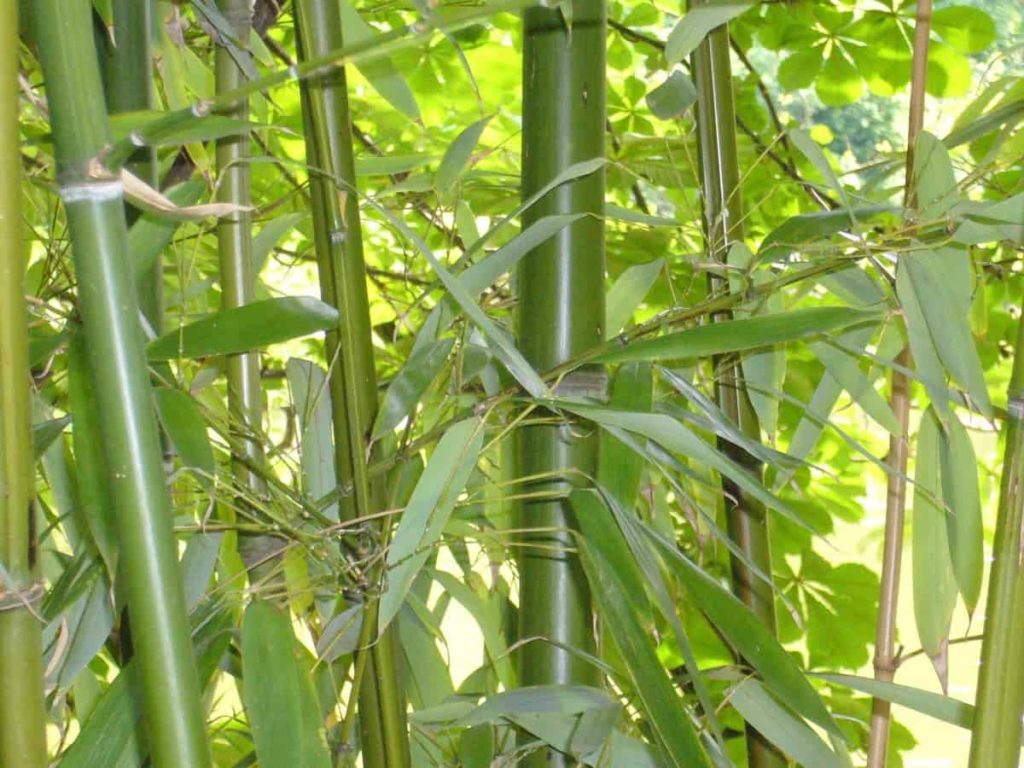
Bamboo fertilizer schedule
Fertilize Bamboo three times a year with high nitrogen turf fertilizer; in spring, early summer, and early fall. Apply the quantity of fertilizer prescribed in the package guidelines. Bamboo has a seasonal growth pattern, with the first growth accelerating in spring when new canes, called culms, appear. The second flush of its growth occurs in summer when the canes grow faster. It is essential to compete with your fertilizing schedule during this growth cycle.
Give plants the first more nitrogen fertilizer in spring, then the second balanced manure in summer. Bamboo in the warm winters may continue to grow in autumn and winter. In this case, you can add a third dose by the end of summer or early fall. While fertilizing, mix the fertilizer lightly in an inch or more of soil above the plant and water it well.
Yellow Bamboo
For outdoor yellow Bamboo, apply your chosen feed twice every year to coincide with the seasonal growing periods of your plant and produce the best results. Or recommendations per manufacturer.
Black Bamboo
Black Bamboo needs less feed to achieve the same results while enjoying more soil acidity than yellow Bamboo. However, there may be times when this rare type needs to be promoted. If so, the growing season per is enough only once. Most beneficial, in early spring.
Don’t over-fertilize – Cane count may increase if you use too much fertilizer. It can make it weak and thin rather than long and thick. Using too much fertilizer is not even friendly to the environment. Do not overuse too many nitrogen fertilizers like urea as it burns your Bamboo plants. They will leave all your leaves in the worst case. Also, do not use fertilizer sown with weedkillers. It will eventually kill your Bamboo.
Do not use fresh manure as soil as it is hot. You can use it as an upper layer around the plant. However, you should be careful. If you use fresh manure when planting, it will lead to death. If you expect low temperatures during fall and late winter, do not fertilize with chemicals in the fall and late winter. It is usually a stagnant season where plants do not grow.
In case you miss this: Growing Bamboo Plants in Containers, Backyard, Terrace
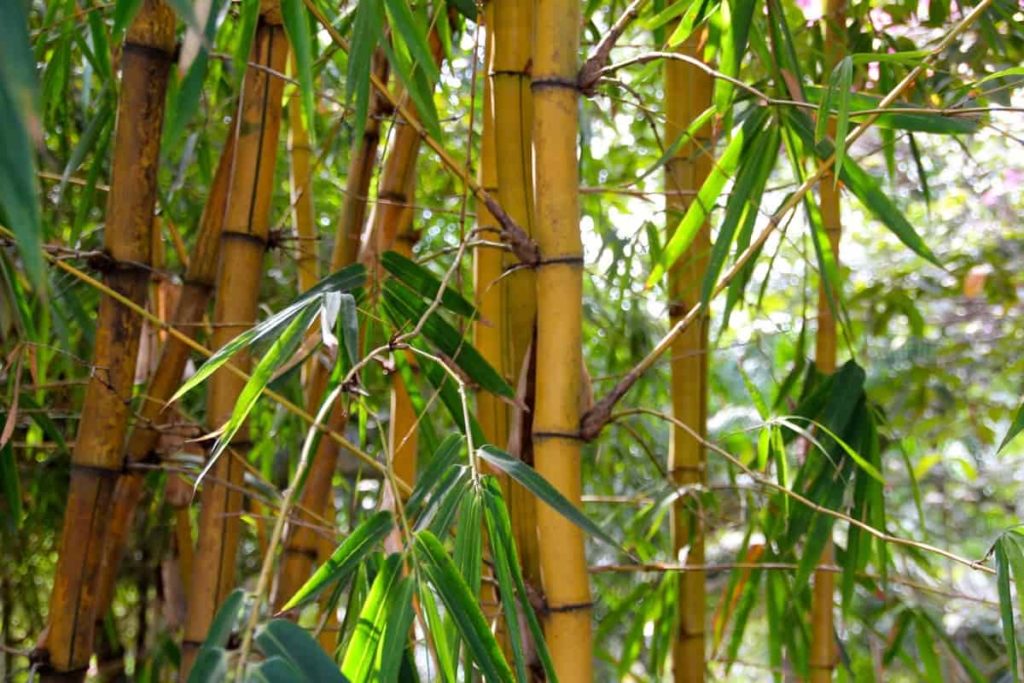
How to fertilize Bamboo in pots
Growing Bamboo in a container needs a lot of water and fertilizer several times a year to thrive. So make sure that quality, well-draining potting soil is selected. The premium soil saplings designed to grow plants in pots, in particular, will include ingredients that will help maintain water and retain plant nutrients. Bamboo is most hungry during warm months when they are producing new canes.
Since they will not have access to the nutrients in the soil, it is essential to feed the Bamboo during this period. Since Bamboo is grass, it likes nitrogen, so choose products that are high in this element (10% or more). Choosing a controlled release fertilizer to grow Bamboo in pots is appropriate to reduce the time spent feeding Bamboo. Choose one with a long life span of at least 6 to 8 months. Apply at the beginning of spring every year as per instructions.
Frequently asked questions about fertilizers for Bamboo (FAQ)
Why does my Bamboo plant become yellow?
Annoying yellow Bamboo leaves can be caused by low soil nutrients, soggy soil or more water, dehydration, or stressful conditions. Regularly monitor the soil; Bamboo needs good drainage.
Can Bamboo be green from yellow again?
Unfortunately, once your Bamboo stalk turns yellow, it won’t return to green again even if you start giving the plant what was missing from its maintenance.
Can I use Miracle-Gro on Bamboo?
Bamboo plants are heavy feeders. So starting a month after planting, Bamboo is fed Miracle-Gro all-purpose plant food, which contains natural ingredients to help feed both plants up and down the ground. Be sure to follow label instructions.
In case you miss this: How to Care Your Plants while You are on Vacation: Ideas, Tips, and Techniques
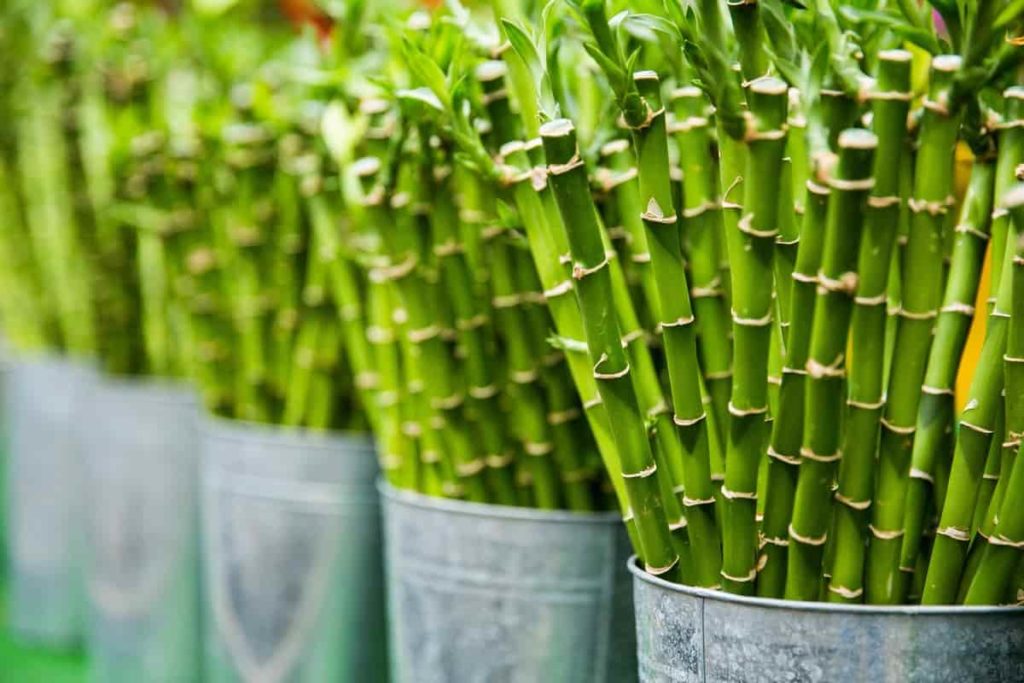
Why is my Bamboo growing so slow?
If the Bamboo does not get enough nutrients, it will grow more slowly or stop growing.
Why does my Bamboo look sick?
Bamboo plants require little care to thrive, but they are not without problems. Due to water conditions, light, nutrition, or bacterial deficiency.
Why is my external Bamboo turning brown?
Too much heat or direct sunlight can cause a brown Bamboo plant, as most varieties of Bamboo prefer shadow or partial sunlight.
What does over-water Bamboo look like?
Typically, the symptoms of over-water Bamboo or Bamboo planted in a wet place are more yellow leaves, rotting new cans, and leaf tips dying back.
Why are my Bamboo leaves curling?
If the leaves are curled sideways (by length), your Bamboo is under stress and not getting enough water. On the other hand, if the leaves are bending downwards, your Bamboo may be getting a lot of water or may not drain enough.
- Broccoli Seed Germination and Selection
- Asparagus Seed Germination and Variety Selection
- Seasonal Flower Gardening: Best Practices for Spring, Summer, Fall, and Winter
- How to Grow Hibiscus from Flower
- Plantation Ideas for Home Decoration: A Beginners Guide
- Flower Garden Designs and Layouts for Beginners
- Planting and Spacing Techniques in Papaya: A Beginner’s Guide
- Growing Gold: Essential Techniques for Planting Pineapples
- How to Make Kalanchoe Plant Bushy: Home Remedies and Solutions
- 11 Reasons Why Your Gardenia is Not Blooming: Home Remedies and Solutions
- Eco Elegance: The Guide to Designing a Drought-Tolerant Landscape
- Gardening on a Slope: Strategies for Hillside Landscaping
- Nourish and Flourish: Top Organic Mulches for Thriving House Plants
- Everything You Want to Know about Indian Mogra Flower: Discover Uses and Growing
- Green Thumb Success: Expert Tips for Cultivating Greenhouse Pumpkins All Year Round
- Maximize Growth & Flavor: The Ultimate Guide to Companion Planting in Herb Gardens
- How to Control Rhododendron Problems Naturally: Home Remedies and Organic Ways to Fix Them
- Natural Magic: The Remarkable Benefits of Cinnamon for Plants
- Best Steps to Revive Dying Tulip with Natural and Organic Treatment
- 10 Reasons Why Your Angel Trumpet is Not Blooming: Remedies and Treatment
- How to Fix Periwinkle Leaf and Flower-Related Problems: Natural Remedies and Solutions
- How to Fix Zinnias Leaf and Flower Problems: Discover Natural and Home Remedies
- Organic Steps to Induce Lemon Tree Flowers: A Comprehensive Guide
- Bloom Booster: Crafting the Perfect Homemade Bougainvillea Fertilizer
- Optimizing Growth: A Guide to Applying NPK Fertilizer for Potted Plants
- 10 Best Homemade Fertilizers for Rubber Plant: DIY Recipes and Application Method
- How to Boost Female Pumpkin Flowers: Effective Steps for More Flowers and High Yields
- Transform Your Indoor Garden: Top Benefits of Pink Salt for Houseplants
- 10 Best Homemade Fertilizers for Peacock Plants (Calathea): Easy DIY Guide
- Unlock Blooms: 9 Reasons Why Your Potted Chrysanthemum is Not Blooming
- 8 Reasons Why Your Potted Hibiscus is Not Blooming: Fix it with Simple Solutions
- Unlock Blooms: 9 Key Reasons Your Potted Frangipani Won’t Flower
- 10 Reasons Why Is My Ice Plant Not Blooming: Remedies and Treatment
- 10 Reasons Why My Potted Hydrangea Not Blooming: Treatment and Remedies
- 10 Reasons Why is My Wisteria Not Blooming: Remedies and Treatment
- 10 Reasons Why is My Goldfish Plant Not Blooming: Remedies and Treatment